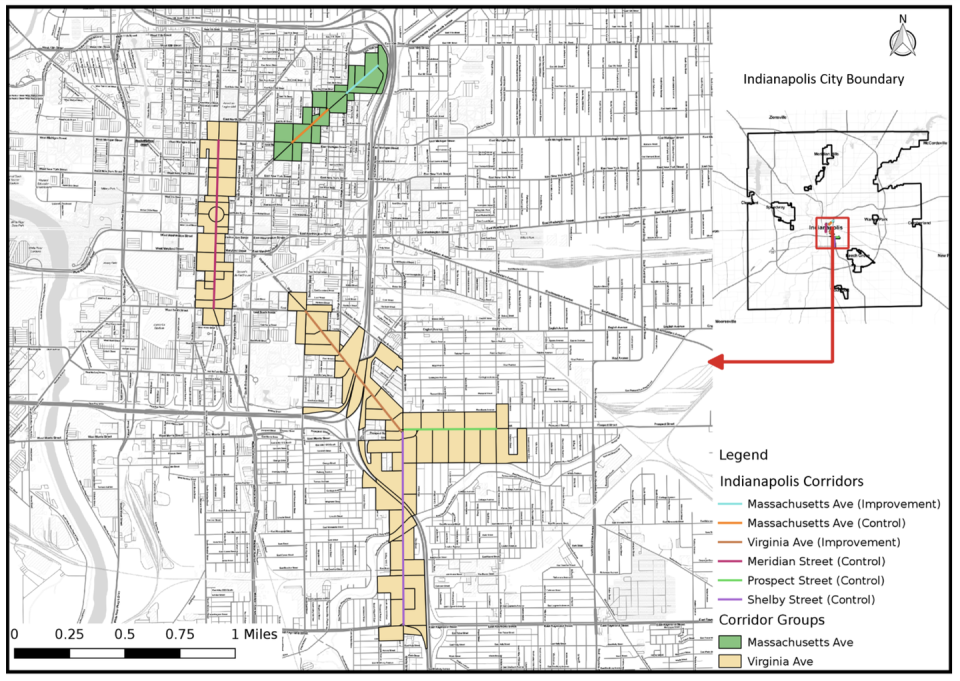Bike Lanes Can Benefit Local Businesses (!), According to New Research

A new study shows that installing bike lanes on streets can help local businesses.
Researchers studied streets with and without bike lanes in six cities in the United States.
Food service businesses experienced the most economic growth after bike lanes were added.
An extensive new study from Portland State University has found that installing bike lanes will likely bring about positive economic impacts to local businesses along the affected streets. Focusing on streets with a heavy presence of food service and retail businesses, the researchers found that most businesses benefited overall—seeing growth in employment and sales, specifically—from bike lanes being installed on their respective streets.
Part of the National Study of the Economic Impact of Streets Improvements, the research was conducted by Jenny Lui, PhD, an associate professor at the university’s school of urban studies and planning, through a partnership with People For Bikes and the consulting firm Bennett Midland.
The study looked at data from businesses along 14 corridors in six cities: Indianapolis; Memphis, Tennessee; Minneapolis; San Francisco; Seattle; and Portland, Oregon. Most of the data was pulled from 2009 to ’14, according to Lui, who told Bicycling they wanted at least three years’ worth after the construction of bike lanes had been completed. The findings were then compared to control corridors (places without bike lanes) in those cities, which were selected based on having similar business characteristics.
“We wanted to have really robust data on what happened before the infrastructure was put in and what happened after,” Lui said.
After analyzing each new bike-friendly corridor in depth, the researchers were able to determine whether it experienced a positive economic impact from the added bike infrastructure, no significant impact (or inconclusive findings), or a negative impact after three years. The study also looked at all types of bike lanes.
[Want to fly up hills? Climb! gives you the workouts and mental strategies to conquer your nearest peak.]
By far, food service businesses experienced the most economic growth after bike lanes were added; those in all but three of the corridors saw substantial increases in sales and/or employment. Though retail businesses did not receive as many benefits as those in the food service sector, nine out of the 14 cases did experience some positive impact overall. Lui said she was particularly surprised by just how consistent the data was in showing economic growth for food service businesses.
“I was quite surprised that, given the number of different types of metrics that we looked at, the results remained pretty consistent for the food service sector,” she said.

They were also hoping to disprove the common notion that removing parking spots in order to install a bike lane would hurt nearby businesses. The study found quite the opposite: Businesses faced with the removal of on-street parking in the study still tended to see positive change.
According to Lui, this study was an effort to expand upon a 2013 study conducted by Bennett Midland, which focused on New York City, and a ’14 study on San Francisco. Those studies came to similar conclusions, but weren’t as broad in scope and only utilized sales tax data. So for her study, Lui also looked at wage and employment data in addition to sales tax data.
“We don’t collect sales tax on everything, so hopefully the way that we’re doing it this time around captures more of the economic activity,” Lui said.
However, collecting the same type of economic data across different cities was no easy task. That played into the cities they chose to focus on in the end—the same data needed to be readily available in each, plus the cities needed enough resources to participate in such an intensive study.
“This is probably the only study out there that has attempted to even analyze bike infrastructure in different cities on this scale in terms of economics,” Lui said. “It’s an extraordinary attempt in collaboration. ... The collaboration was really key, and I think that as an academic researcher working in this field, it was an exceptional learning experience as well, trying to put everything together.”
And though it wasn’t exactly a focus of the study, Lui said she’s noticed that cities have been progressively installing better and more substantial bike infrastructure over the years.
“It’s definitely an encouraging fact that we’re seeing a lot more of this high quality infrastructure put in,” she said. “We seem to find that people and businesses and communities seem to most likely prefer to have more high quality types of bike infrastructure… or some kind of separated bike lanes.”
You Might Also Like

